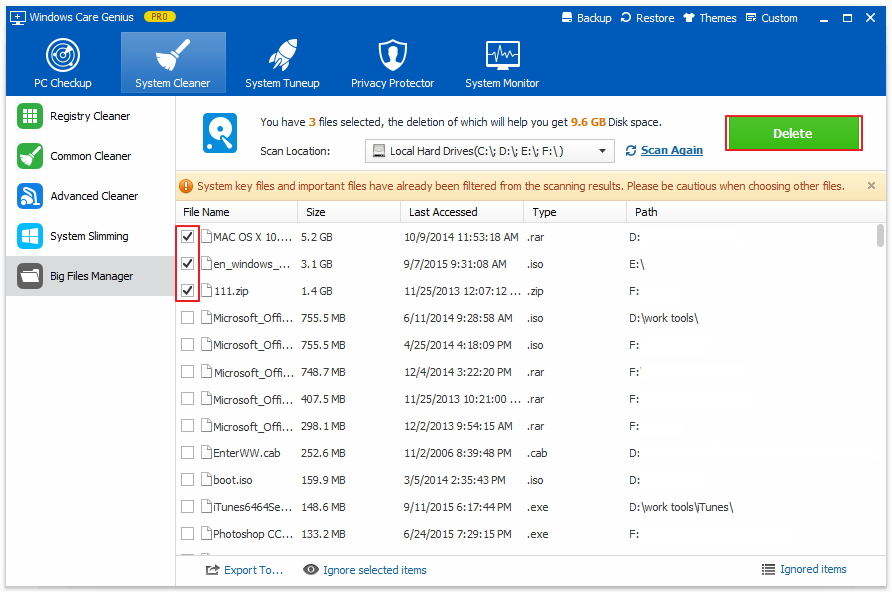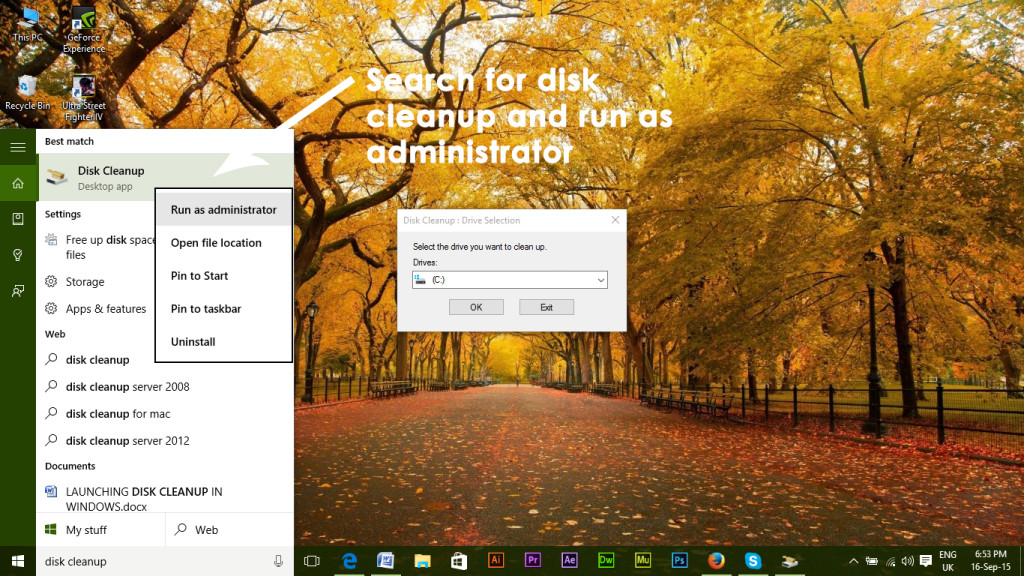
Unfortunately, if you choose a power profile that uses hibernate (such as suspend when inactive for 15 minutes, and hibernate after 8 hours), then the hibernate file will come back again. That's right, no reboot required, immediate benefit (if you don't need hibernate functions). If you got 16GB of RAM, well, you now have 16GB more free disk space on your C: drive.

That's the easy one, just follow the wizard.

1) Start with clicking Start, then typing "Disk Cleanup" then pressing enter If you are uncomfortable doing these actions, you shouldn't be doing them! Let's face it, this site is largely for intermediate and advanced users, but the first two are the easiest, safest, and also likely have the biggest impact in free space. So, here's some methods to get some empty space back, in increasing order of aggressiveness/desperation. Especially important on older, non-TRIM enabled SSDs. Staying short of only 10% free space at all times is also a good idea, so you really need more like 25GB for a bit of extra margin, and avoiding potential SSD performance impacts. If you have a workstation-caliber laptop, like my vZilla and its 128GB mSATA SSD, you may find keeping things like a 16GB hibernate file on a 128GB C: drive a challenge. This is likely to still be the case with the RTM (arriving August 15th).
CLEAN DISK IN WINDOWS 8 64 BIT
Windows 8 system requirements listed here (and above) include the big gotcha: at least 20GB free disk space is required on your C: drive for 64 bit upgrade installs. Posted by Paul Braren on (updated on Aug 14 2014) in


 0 kommentar(er)
0 kommentar(er)
